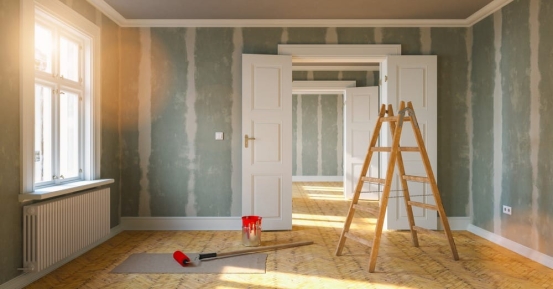

Saving money during a home renovation isn’t about cutting corners—it’s about making thoughtful, informed decisions. The key lies in strategic planning, prioritizing long-term value, and understanding how to make your budget work smarter, not harder. When managed properly, a renovation can enhance your comfort, lifestyle, and property value without becoming a financial burden. The balance between cost and quality starts well before construction begins—with careful preparation and research.
Saving money during a home renovation isn’t about cutting corners—it’s about making thoughtful, informed decisions. The key lies in strategic planning, prioritizing long-term value, and understanding how to make your budget work smarter, not harder. When managed properly, a renovation can enhance your comfort, lifestyle, and property value without becoming a financial burden. The balance between cost and quality starts well before construction begins—with careful preparation and research.

Every successful renovation project starts with a clear plan and a detailed budget. Outline your goals, list specific tasks, and assign realistic costs to each. Be sure to include a contingency fund—typically 10–20% of your total budget—to cover unexpected issues that often arise once work begins. The more precise your plan, the easier it is to control spending and make cost-conscious choices. It’s fine to get design inspiration from magazines or shows, but always compare your vision with your actual budget to keep expectations grounded.
The more you research, the more you can save without lowering quality. Whether you’re hiring contractors, selecting materials, or buying appliances, take time to compare options. Request multiple quotes from professionals and don’t hesitate to negotiate for better rates or added services. For materials, check both local suppliers and online retailers. Many hardware and home improvement stores expect price comparisons and are willing to match competitors’ deals. You can also explore architectural salvage stores or online marketplaces where you might find gently used or overstocked items at much lower prices without compromising on quality.
Taking on certain tasks yourself can significantly reduce labor expenses. Painting, basic demolition, or simple landscaping are great ways to contribute “sweat equity.” However, it’s important to know your limits—attempting complex work like plumbing or electrical repairs without proper skills can lead to costly mistakes later. Save the technical work for certified professionals and focus your efforts where you can truly add value.
A creative approach to reusing existing materials can stretch your budget while maintaining quality. Cabinets can be refinished instead of replaced, old doors can be repurposed, and furniture can be updated with a fresh coat of paint. Assess what can be repaired, restored, or reimagined before deciding to buy new. This not only minimizes waste but also gives your home a unique, personalized touch that brand-new materials can’t replicate.
If doing the entire renovation at once feels overwhelming financially, break it into manageable stages. Prioritize the most essential or high-impact areas first—such as the kitchen, bathroom, or energy-efficiency upgrades—and handle other parts later when your budget allows. Phased renovations give you time to recover financially between projects while maintaining steady progress. Just make sure each stage is carefully planned to avoid having to redo or dismantle finished areas in later phases.
Energy-efficient upgrades are a smart investment that continues to pay off long after the renovation ends. Installing energy-saving windows, better insulation, LED lighting, and efficient appliances can reduce monthly utility costs, increase comfort, and even qualify you for government incentives or rebates. Although these improvements might cost more initially, they provide long-term savings and enhance your home’s resale value.
Personal referrals can help you find reliable and cost-effective professionals. Ask family, friends, or neighbors for recommendations on contractors, carpenters, or designers they’ve personally hired. Seeing their completed projects firsthand can help you gauge quality and reliability. However, even with referrals, always verify credentials, insurance, and past work before hiring. A trusted recommendation is a great start, but due diligence is essential.
Reducing renovation costs isn’t about cutting quality—it’s about making intentional choices that deliver long-term value. Focus on careful budgeting, comparison shopping, smart DIY contributions, and thoughtful reuse of materials. By investing where it truly matters and saving where you can, you can achieve a stylish, durable renovation without exceeding your budget. With strategic planning and creativity, your dream home can become a reality—beautiful, functional, and financially sustainable.